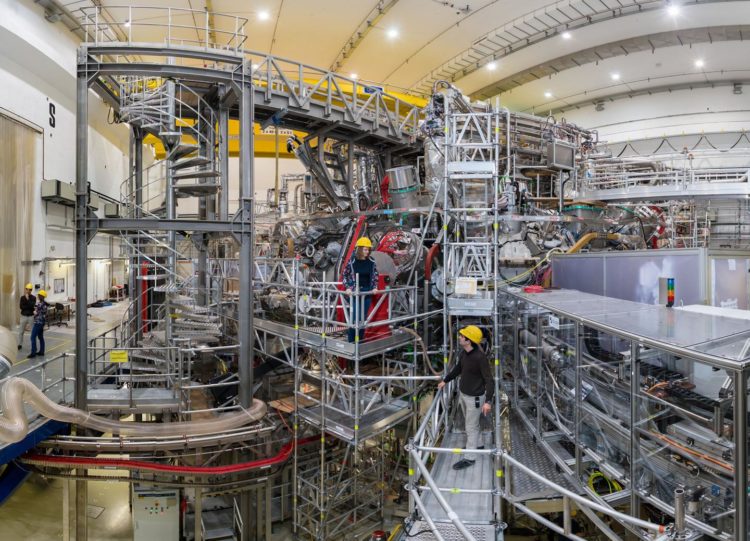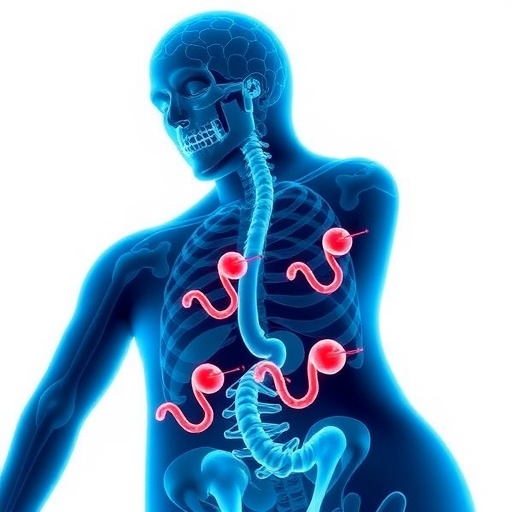German-American joint project/Funding by Helmholtz Association

Credit: IPP, Volker Steger
Fusion systems of the stellarator type promise high-performance plasmas in continuous operation. Accordingly, heat and particles from the hot plasma permanently stress the vessel walls. It is the task of the so-called divertor – a system of specially equipped baffle plates to which the particles from the edge of the plasma are magnetically directed – to regulate the interaction between plasma and wall. The structure of the magnetic field and the choice of material for the plates determine how well the divertor can perform this task and how well the plasma can be thermally insulated. The divertor design for new stellarators is therefore highly demanding in terms of both plasma physics and technology and requires extensive experimental and theoretical investigations.
For this purpose, IPP in Greifswald and the University of Wisconsin-Madison have now founded the Helmholtz International Lab for Optimized Advanced Divertors in Stellarators (HILOADS). HILOADS offers the framework to intensify the successful cooperation of the University of Wisconsin in Madison as central institution with IPP in Greifswald, Forschungszentrum Jülich and further US-American universities. The scientists involved will optimise and coordinate divertor designs, materials and plasma confinement.
For the experiments required for this, both Wendelstein 7-X in Greifswald, the world’s largest stellarator, and the much smaller but very flexible HSX (Helical Symmetric Experiment) in Madison are available. The two devices differ not only in size, but also in their completely different concepts for the divertor and for optimising plasma confinement. In addition, there is the small CTH (Compact Toroidal Hybrid) device in Auburn. In addition to these three stellarators, two linear plasma systems will be used for investigations on materials and wall conditioning as well as for the development of measuring instruments: PSI-2 in Jülich and MARIA in Madison. Equipped in this way, HILOADS will promote the development of the next generation of optimised stellarators and, in particular, support the development of a concept for a new medium-sized stellarator experiment in Madison.
With the funding programme of ‘Helmholtz International Labs’, the Helmholtz Association, to which the IPP is affiliated as an associated institute, aims to expand international cooperation with excellent research institutions and create visible research activities of the Association at locations abroad. The Helmholtz Association will provide 24 percent of the 6.125 million euros estimated for HILOADS over the next five years. The universities in Madison and Auburn will contribute 35 and 15 percent, respectively, IPP and Forschungszentrum Jülich 18 and 8 percent, respectively. HILOADS is scheduled to start in spring 2020.
Background
The aim of fusion research is to develop an environmentally sound and climate-friendly power plant. Similar to the sun, it will generate energy from the fusion of atomic nuclei. Because the fusion fire only ignites at temperatures above 100 million degrees, the fuel – a low-density hydrogen plasma – must not come into contact with the cold vessel walls. Confined by magnetic fields, it floats almost contact-free inside a vacuum chamber. The Wendelstein 7-X stellarator in Greifswald is intended to investigate the suitability of this type of device for a power plant.
###
Media Contact
Isabella Milch
[email protected]
49-893-299-1317
Original Source
https:/





